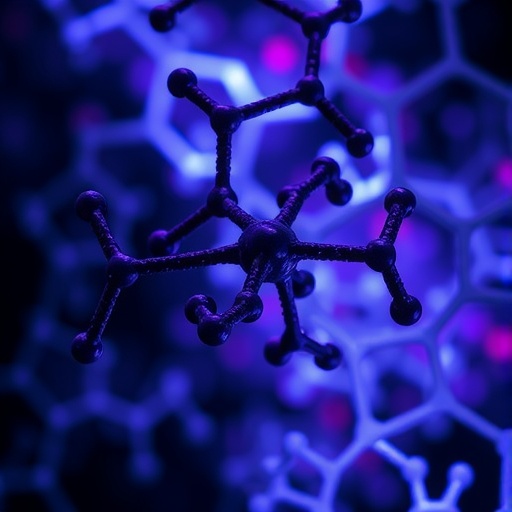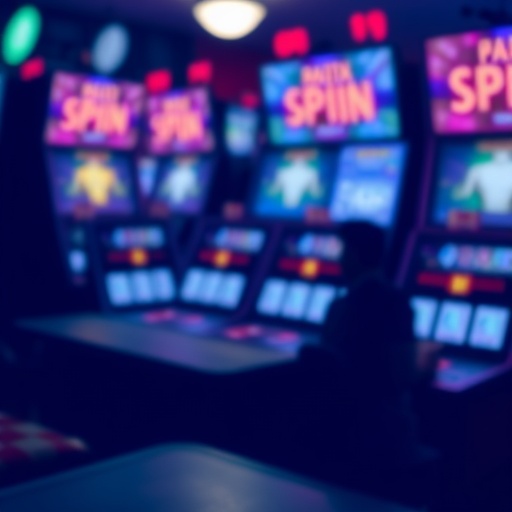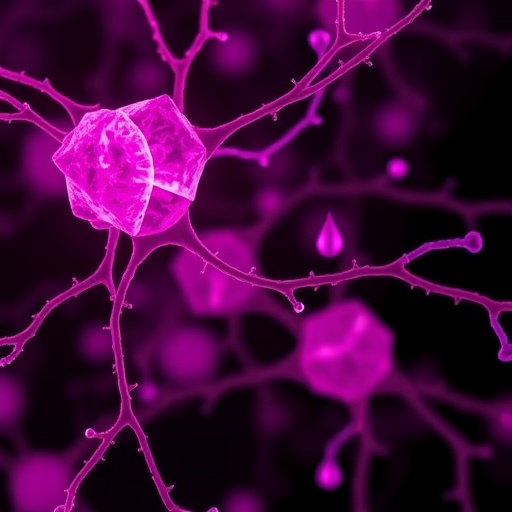
Understanding the intricate ways psychedelics foster new neural connections has become a cornerstone in the pursuit of innovative treatments for neurodegenerative and neuropsychiatric disorders. This quest centers on unraveling the biochemical cascades that underlie both the enhancement of neuroplasticity and the hallucinogenic experiences historically associated with psychedelic compounds. Groundbreaking research from the University of California, Davis, spearheaded by experts in chemistry, biochemistry, and neurotherapeutics, now illuminates how non-hallucinogenic psychedelic analogs can engage these pathways to effect neuroplastic change without triggering hallucinations.
Published in the prestigious journal Nature Neuroscience, the study dives deep into comparing the hallucinogenic compound 5-MeO-DMT—a potent serotonergic psychedelic—with its structural relative, tabernanthalog (TBG), which notably lacks hallucinogenic properties. Scientists meticulously charted how each compound interfaces with key neurochemical receptors and downstream signaling proteins responsible for plasticity in the brain’s cortical regions, particularly the prefrontal cortex, a hub for cognition and mood regulation.
Central to this research is the serotonin 2A receptor (5-HT2A), a molecular gateway through which psychedelics exert much of their profound effects. Both 5-MeO-DMT and TBG activate this receptor, yet their modes of activation differ substantially. 5-MeO-DMT acts as a full agonist, fully engaging the receptor and eliciting a cascade of neurochemical responses, including the release of glutamate and activation of immediate early genes—processes long believed critical to neuroplasticity but also closely tied to the hallucinogenic effects. In stark contrast, TBG functions as a partial agonist, triggering the receptor only modestly, enough to ignite plasticity-promoting pathways while circumventing the biochemical events associated with hallucinations.
.adsslot_ByrUo4mfzt{width:728px !important;height:90px !important;}
@media(max-width:1199px){ .adsslot_ByrUo4mfzt{width:468px !important;height:60px !important;}
}
@media(max-width:767px){ .adsslot_ByrUo4mfzt{width:320px !important;height:50px !important;}
}
ADVERTISEMENT
David E. Olson, director of UC Davis’s Institute for Psychedelics and Neurotherapeutics, eloquently analogizes receptor activation to opening a water faucet. Whereas full agonists turn the faucet wide open, allowing a torrent of water to flow, partial agonists yield only a trickle. Remarkably, this trickle proves sufficient to stimulate the molecular machinery underlying neuroplasticity without the sensory distortions that accompany full receptor activation. This nuanced mechanism offers tantalizing clues about how psychedelics’ therapeutic benefits might be disentangled from their psychoactive side effects.
Utilizing a multifaceted arsenal of pharmacological and genetic techniques in rodent models, the research team validated that both compounds induce neuroplastic changes by advancing signaling through TrkB, mTOR, and AMPA receptors downstream of 5-HT2A activation. These proteins and receptors orchestrate the growth and remodeling of dendritic spines—the microscopic protrusions on neurons that form the physical substrate for synaptic communication and network plasticity.
Beyond molecular events, the study explored the functional significance of this neuroplasticity. By tagging and then selectively ablating the newly grown dendritic spines in the prefrontal cortex post-TBG treatment through advanced laser techniques, researchers demonstrated a causal link between spine growth and sustained antidepressant-like effects. The ablation extinguished the antidepressant response, firmly establishing neuroplastic remodeling as a mechanistic basis for therapeutic benefits, a concept previously shown only in ketamine studies but now extended to serotonergic psychedelics.
This discovery addresses a major question in psychedelic neuroscience: whether the ability of these compounds to promote neuroplasticity underlies their prolonged antidepressant properties. The data affirm that structural changes in key brain circuits, rather than transient neurochemical shifts, likely sustain mood improvements. Such findings pave the way for developing next-generation psychoplastogens that exert lasting benefits without hallucinogenic distractions, a critical advance for clinical applicability.
Intriguingly, the research also challenges long-held dogmas about the role of glutamate release and immediate early gene activation in psychedelic-induced plasticity. While full agonists like 5-MeO-DMT caused pronounced glutamate bursts and genetic activation, TBG efficiently promoted neuroplasticity absent these effects. This divergence suggests that glutamate surges and immediate early gene responses may be more intimately linked to the hallucinatory experience than to the structural reorganization of neural circuits itself.
The comprehensive profiling of brain-wide gene expression following drug administration, employing cutting-edge whole-brain imaging and single-nucleus RNA sequencing, further underscored this distinction. TBG’s unique neurobiological signature emphasizes a pathway to isolate therapeutic plasticity from perceptual alterations, a feat that has profound implications for treating mood and cognitive disorders with minimal side effects.
Commenting on the work, co-author John A. Gray highlights the evolving nature of psychedelic science, noting that with every new experiment, the complexity and subtlety of drug-brain interactions come into sharper focus. The findings underscore a growing appreciation that the neurochemical choreography underpinning psychedelics’ actions is not monolithic but rather a spectrum modulated by drug-receptor interactions’ intensity and duration.
Financial and infrastructural support for this pioneering study came from several esteemed sources, including the National Institutes of Health and multiple philanthropic foundations dedicated to advancing basic and translational neuroscience. Importantly, the collaboration between academia and industry facilitated by Delix Therapeutics—co-founded by lead investigator David Olson—reflects an emerging model for accelerating innovative neuropsychiatric therapeutics from bench to bedside.
As the field advances, the capacity to selectively fine-tune psychedelic receptor activity offers hope for reconceptualizing mental health treatment. Drugs like tabernanthalog represent the vanguard of psychoplastogens: compounds that can drive meaningful brain remodeling without inducing the sensory and cognitive upheavals associated with traditional hallucinogens. This approach holds promise not only for depression but potentially for a broad spectrum of psychiatric and neurodegenerative conditions where impaired plasticity plays a pathogenic role.
In sum, the UC Davis team’s findings redefine our understanding of psychedelic neurobiology. They disentangle the molecular and functional threads connecting receptor activation, gene expression, neural remodeling, and behavioral outcomes. This sophisticated biochemical narrative not only clarifies the mechanisms underlying psychedelics’ therapeutic effects but also charts a viable course to harness these effects safely and effectively, marking a pivotal turning point in neuropsychopharmacology.
Subject of Research: Animals
Article Title: The psychoplastogen tabernanthalog induces neuroplasticity without proximate immediate early gene activation
News Publication Date: 4-Aug-2025
Web References:
https://www.nature.com/articles/s41593-025-02021-1
http://dx.doi.org/10.1038/s41593-025-02021-1
Keywords: Psychoactive drugs, Psychiatry, Pharmaceuticals, Signal transduction
Tags: biochemical pathways in psychedelicscognitive mood regulationhallucinogenic compounds comparisoninnovative neurotherapeuticsneurochemical signaling in the brainneurodegenerative disorder treatmentsneuropsychiatric disorder therapiesnon-hallucinogenic psychedelic analogspsychedelics and neuroplasticityserotonin 2A receptor activationtabernanthalog research studyUC Davis neuroscience findings





